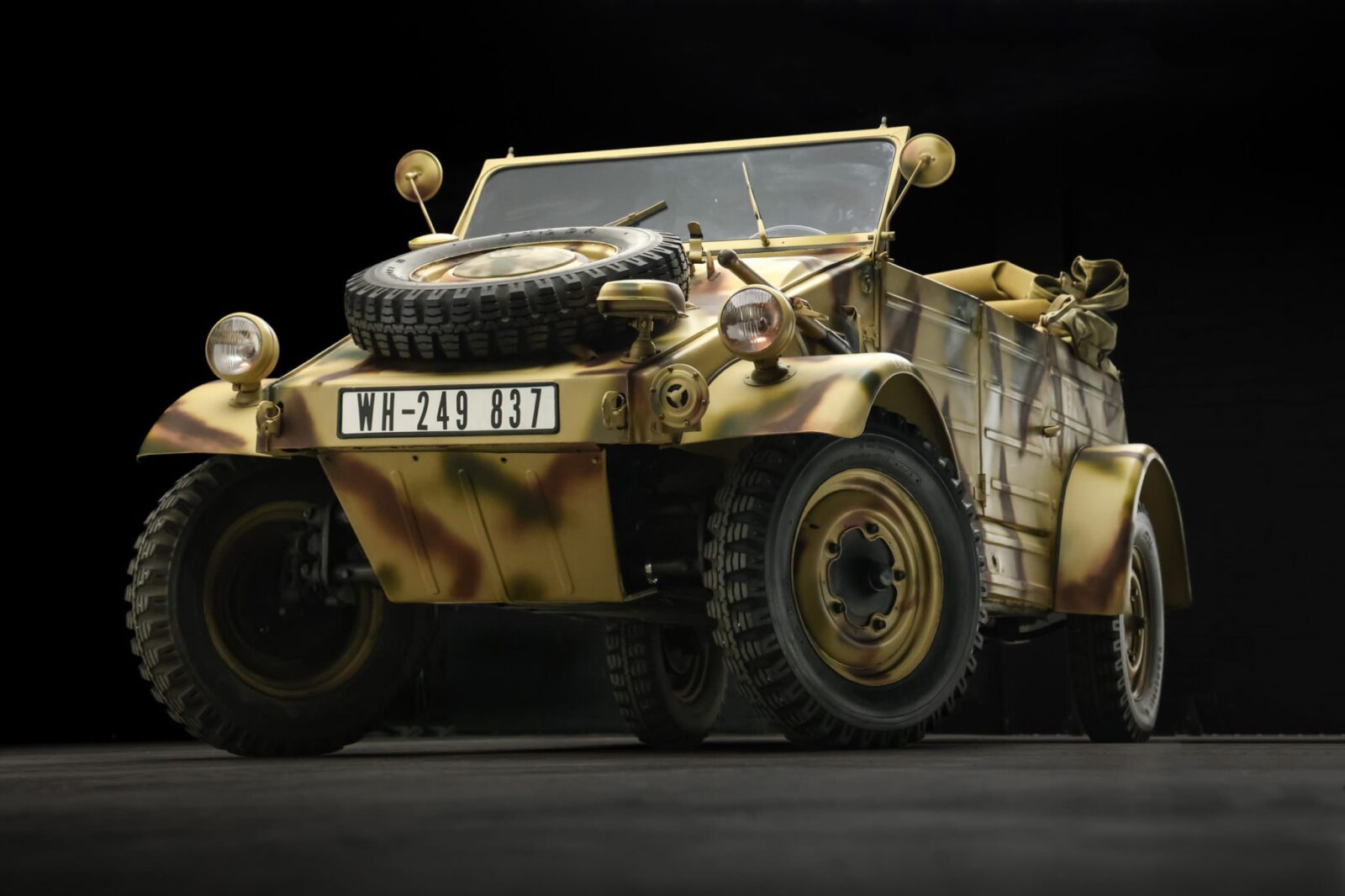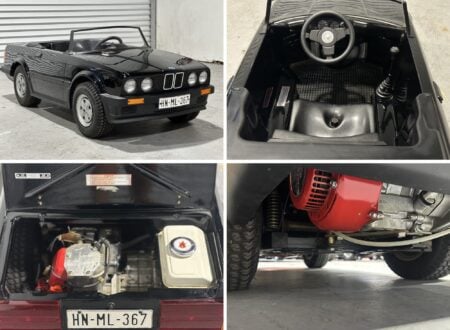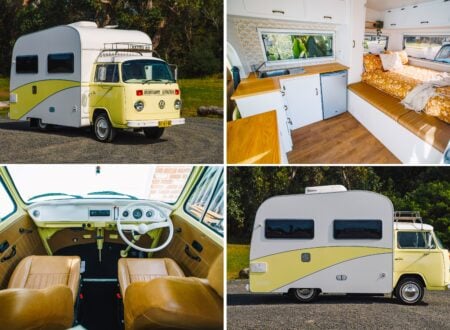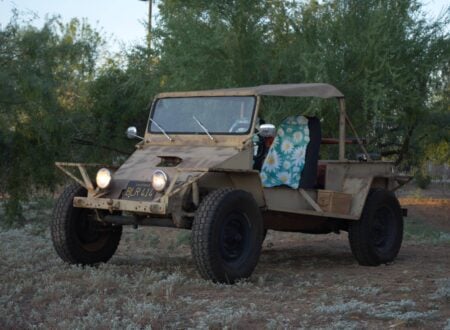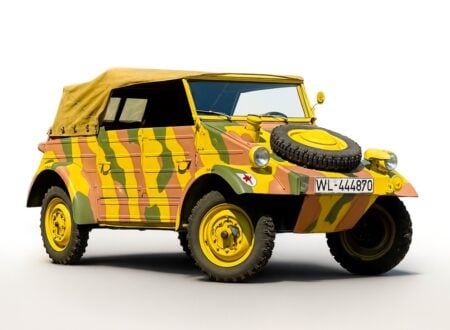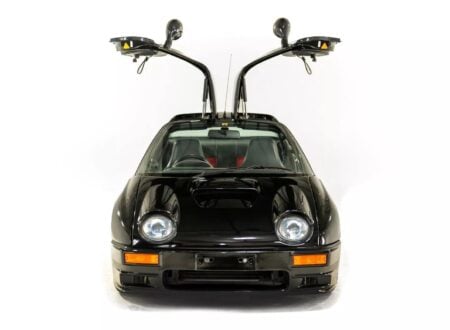This is an original 1944 Volkswagen Kübelwagen, it’s a WWII-era vehicle developed and built specifically for use by the Wehrmacht, or German armed forces, during the war.
The Kübelwagen was designed by Ferdinand Porsche and based heavily on the pre-existing Volkswagen Beetle platform. Despite the fact it was rear-wheel drive only it proved highly capable off road, and over 53,000 were made in total.
Fast Facts – The Volkswagen Kübelwagen
- The Volkswagen Kübelwagen was a WWII-era vehicle developed specifically for the Wehrmacht by Ferdinand Porsche. It was based on the Volkswagen Beetle platform, featuring a lightweight thin-sheet steel body, a folding soft top, and a simple flat windscreen. Despite being rear-wheel drive, it had a low curb weight, limited-slip differential, and independent suspension, making it highly capable off road.
- The Kübelwagen, often referred to as the “German Jeep,” was developed before the American Willys Jeep and saw extensive use during WWII. It debuted as the Type 82 in 1940 and was used in various locales, including the deserts of North Africa, the Alps, the eastern front, and Normandy. Over 50,000 units were produced during the war, with additional units made post-war for British Army use.
- The vehicle was initially designed with a 1.0 liter engine, later upgraded to 1.1 liters in 1943 to improve torque and horsepower. It featured gear-reduction hubs to improve ground clearance and maintain low-speed functionality. The Kübelwagen’s flat underside allowed it to slide over boggy terrain, contributing to its effectiveness in difficult environments.
- The 1944 Volkswagen Kübelwagen shown in this article is in excellent condition throughout. It includes the engine upgrade that debuted in 1943, a folding canvas soft top, a camouflage paint scheme, and street-legal lighting. The vehicle is for sale in Thousand Oaks, California, complete with a tool kit and a clean Alaska title.
The German Jeep
The Volkswagen Kübelwagen has been called the “German Jeep” but in many respects this does the vehicle a disservice. It was developed and deployed well before the Willys Jeep first appeared, and it proved a match for the American 4×4 both off road and on.
Above Video: This full length documentary tells the tumultuous story of Volkswagen, including the tale of how the company came to be under the guidance of Hitler – the Kübelwagen gets a mention early on also.
The name “Kübelwagen” translates from German to “bucket car” in English. The term “Kübel” means “bucket” and “Wagen” means “car” or “vehicle.” The original name for the vehicle had been Kübelsitzwagen or “bucket-seat car,” but the clear visual similarity to a bucket made the name surprisingly suitable.
The Need For A Wehrmacht Off Roader
Though there had been earlier conversations about the need for a mass-produced off road military vehicle between Adolf Hitler and Ferdinand Porsche in the mid-1930s, the project didn’t get a formal start until 1938.
Porsche, recognizing the fact that time was of the essence, based the design on the floorpan, suspension, and drivetrain of the pre-existing Volkswagen Beetle. A lightweight thin-sheet steel body was designed, as well as a folding soft top and a simple flat windscreen that could fold down onto the hood where the spare wheel was mounted.
There were experiments done into developing a four wheel drive drivetrain for the car, but the significant added weight and complexity, as well as the added strain on the already relatively small 1.0 liter engine ruled it out. Though this design would later be modified and used on the Volkswagen Schwimmwagen.
Given the fact that the Kübelwagen would be rear wheel drive only, every attempt was made to ensure it would function as well off road as possible. It had a low curb weight of just 725 kilograms (1,598 lbs) which was 300 kgs (661 lbs) less than the American Jeep.
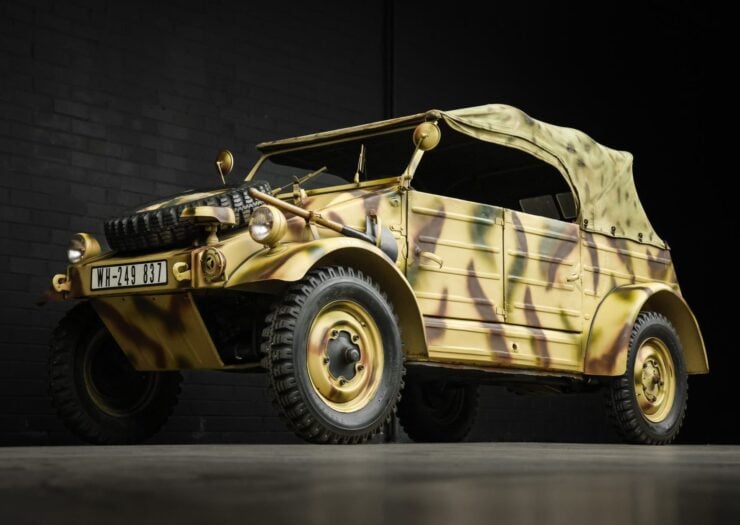

It was given a limited-slip differential, the independent front and rear suspension, and the vehicle had a flat underside meant it could slide over mud and other boggy terrain almost like a powered sled.
During development a requirement was added that the vehicle’s lowest maintainable speed should be 4 km/h (2.5 mph) down from the 8 km/h (5.0 mph) that it had been geared for.
Ferdinand Porsche had already wanted some more ground clearance for the Kübelwagen, so instead of changing the ratio of the first gear, he added gear-reduction hubs to lower the gearing while lifting the car an additional few inches.
The Kübelwagen Debuts
The final version of the Volkswagen Kübelwagen, the Type 82, debuted in 1940. The early prototype versions had been named the Type 62, and they had been used in limited numbers during the invasion of Poland – the event that triggered the full-scale outbreak of WWII.
Despite the lack of four wheel drive, the Kübelwagen would prove indispensable to the Nazi war machine throughout all of WWII, right up to the dying days of the conflict in 1945 as Germans were retreating back towards Berlin from all over Europe.
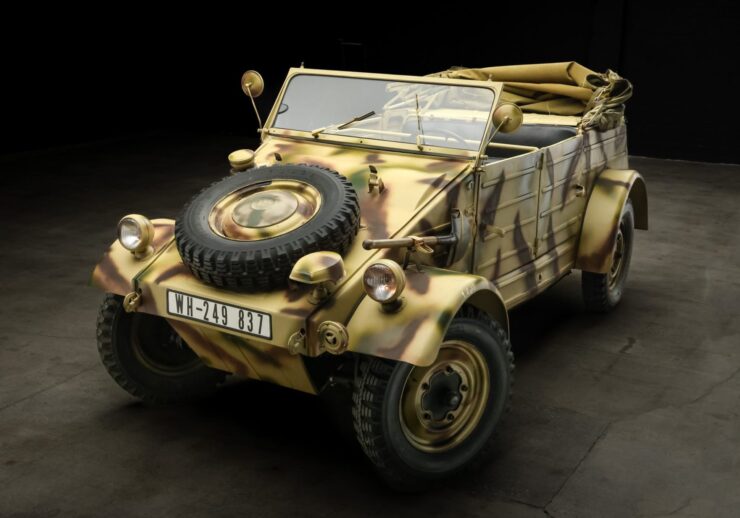

Kübelwagens were used in the deserts of North Africa, the mountain passes of the Alps, the unforgiving mud of the eastern front, right through to the streets of Paris, and the fortifications along the beaches at Normandy.
Production Numbers And Legacy
50,435 were made during the war, from 1940 to 1945. An additional 2,490 were made in 1945 after the war for use by British Army personnel now stationed in Germany and working to help get the Volkswagen factory back into production to provide jobs and much needed foreign capital inflows.
In some respects, the Kübelwagen was the original off road Beetle, a forefather of the Baja Bug, the Meyers Manx, and the VW Thing that would appear 20 years later in sunny California.
The 1944 Volkswagen Kübelwagen Shown Here
The Kübelwagen you see here is an original example from 1944, this means it benefits from the engine upgrade that took place in March of 1943, increasing the displacement from 1.0 to 1.1 liters and improving both torque and horsepower.
This vehicle appears to be in excellent condition throughout and has therefore most likely been restored at some point. It was bought by the current owner, now seller, four years ago from Alaska.
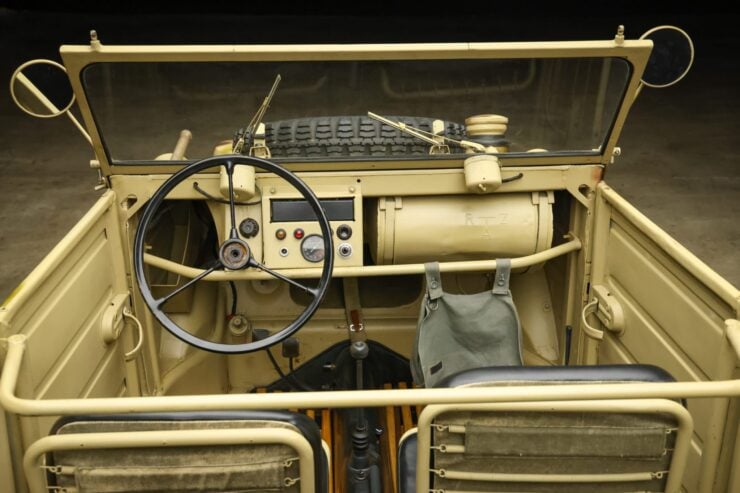

It comes with a folding canvas soft top, and it has a beige with brown and green camouflage paint scheme which has also been applied to the steel wheels. The spare wheel is on the hood, the black vinyl upholstered seats are all in place, and it has all the correct lighting to be street legal.
It’s now being offered for sale out of Thousand Oaks, California with a tool kit and a clean Alaska title. If you’d like to read more about it or register to bid you can visit the listing here.
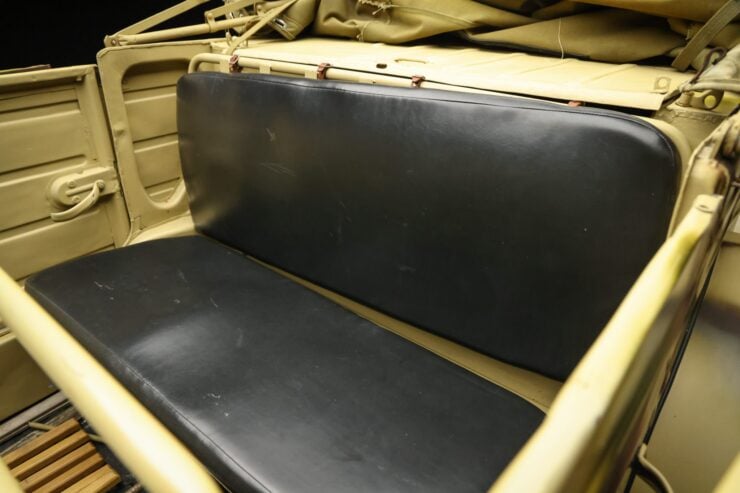
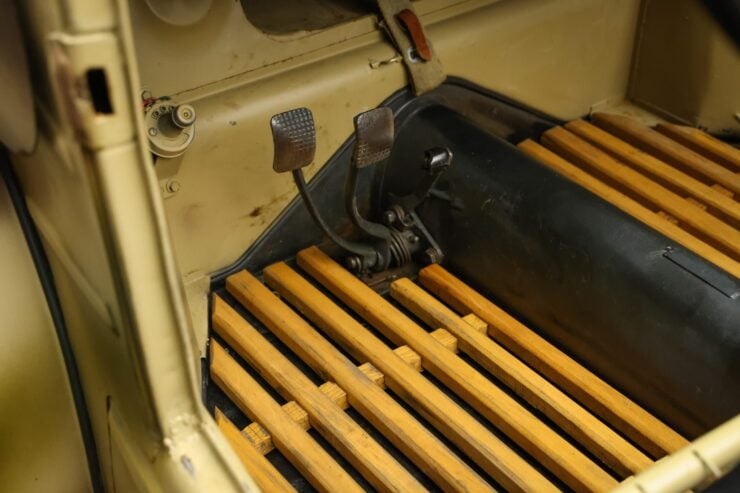
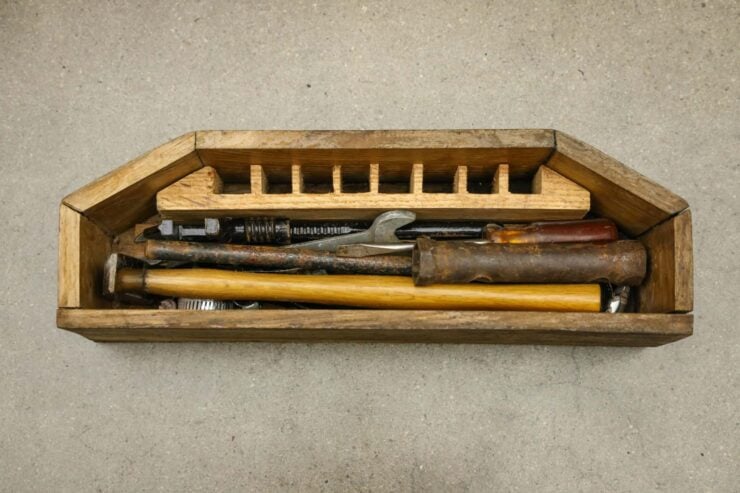
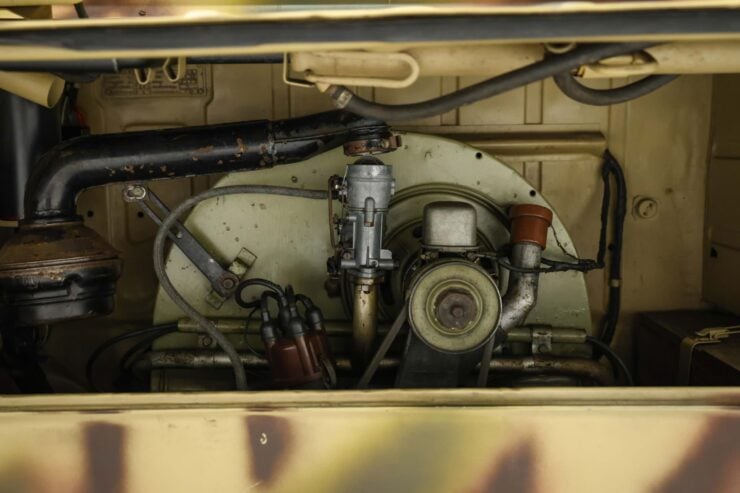
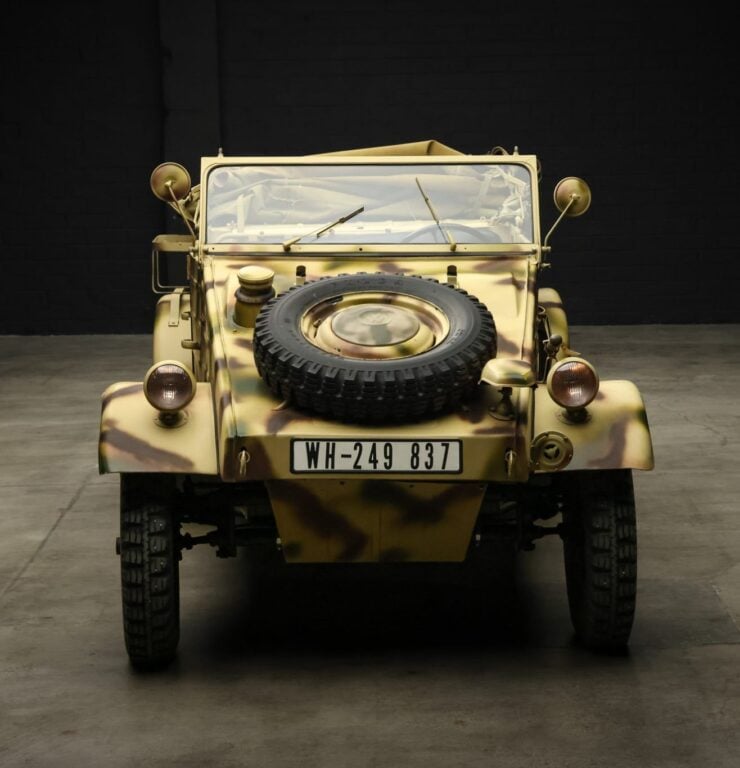
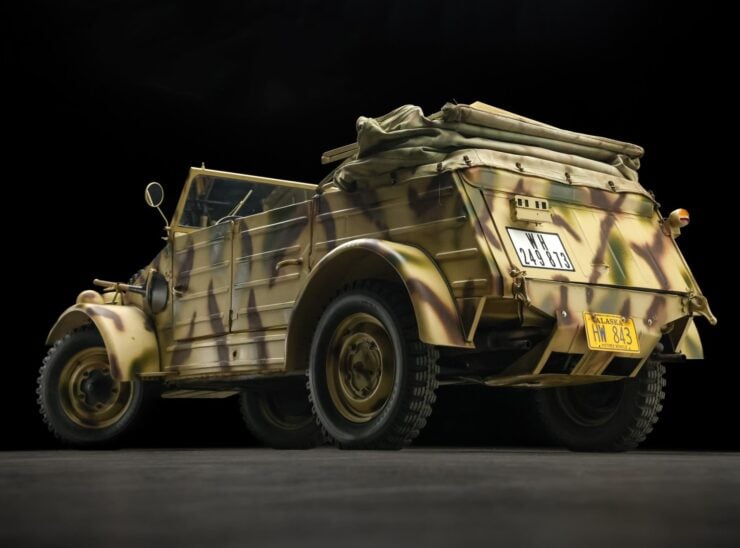
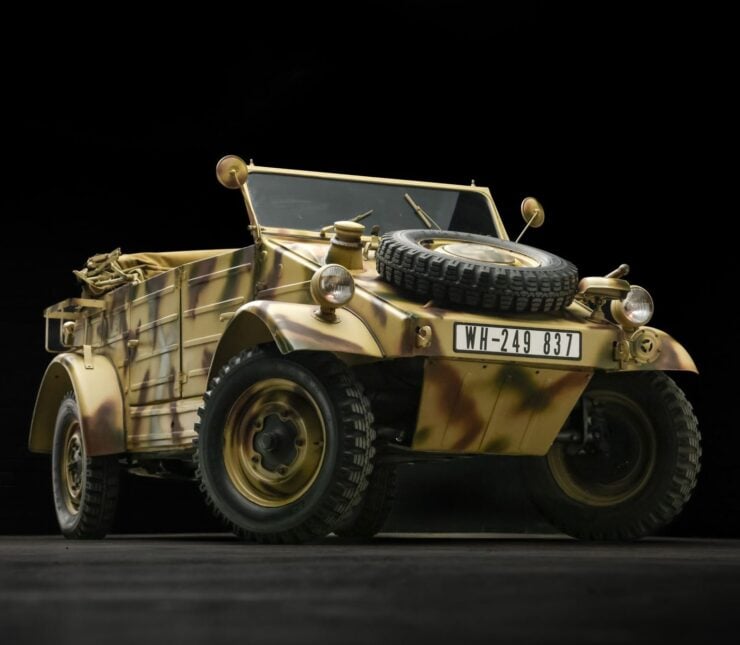
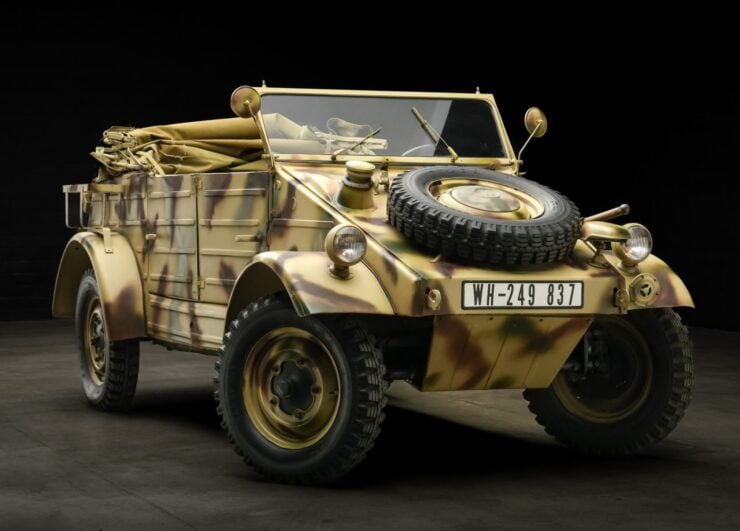
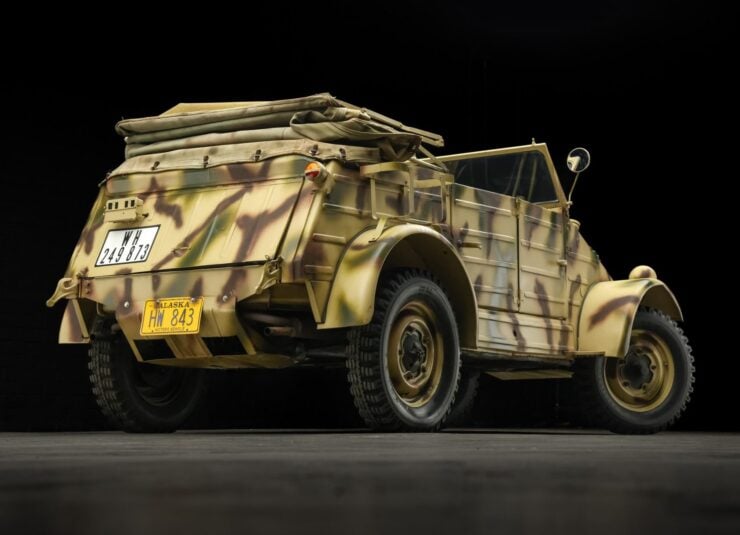
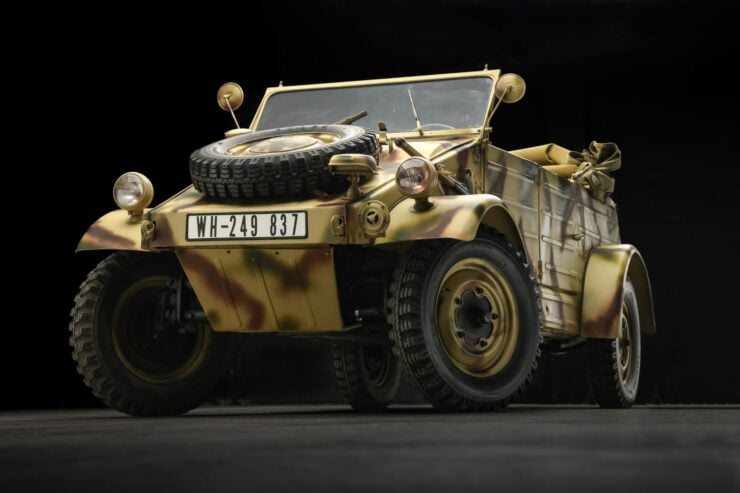
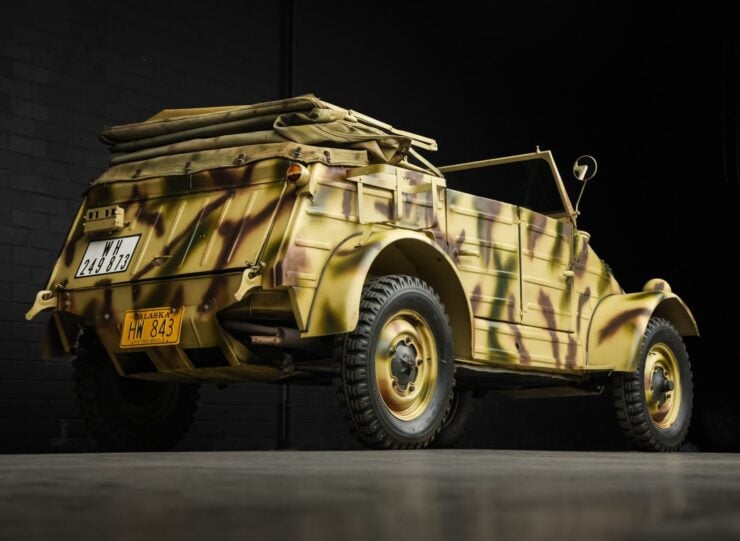
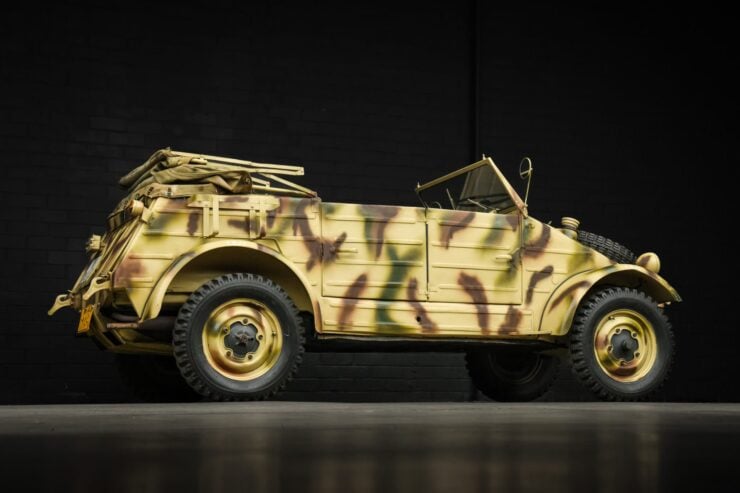
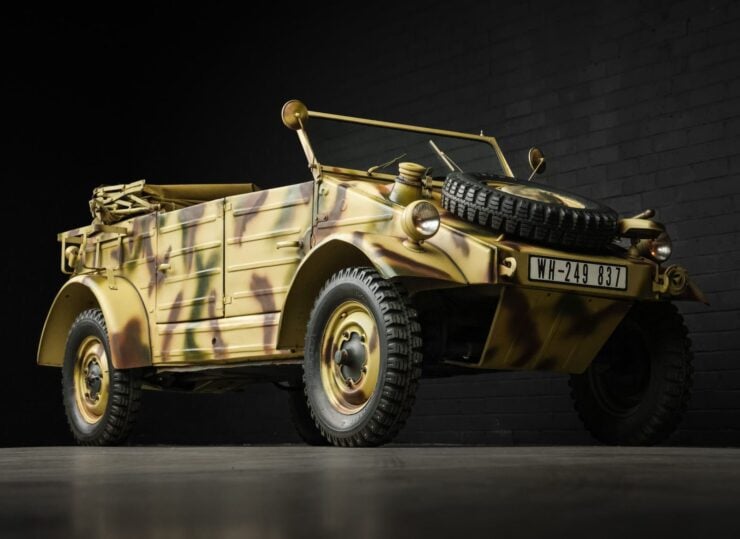
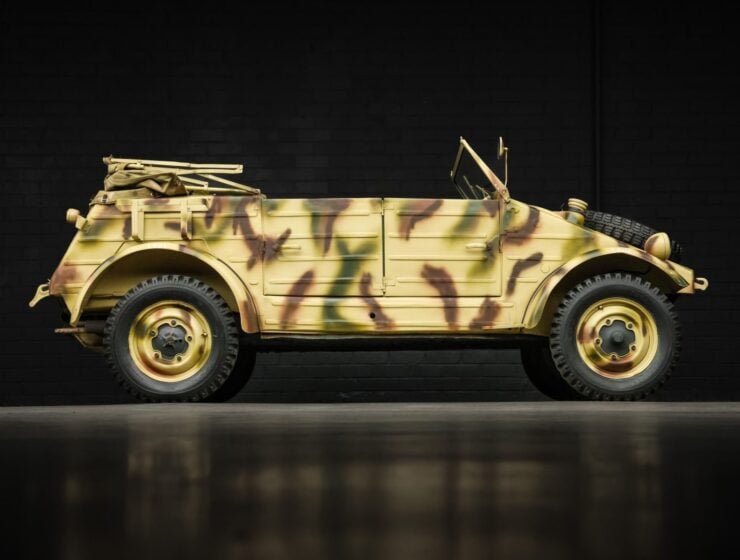
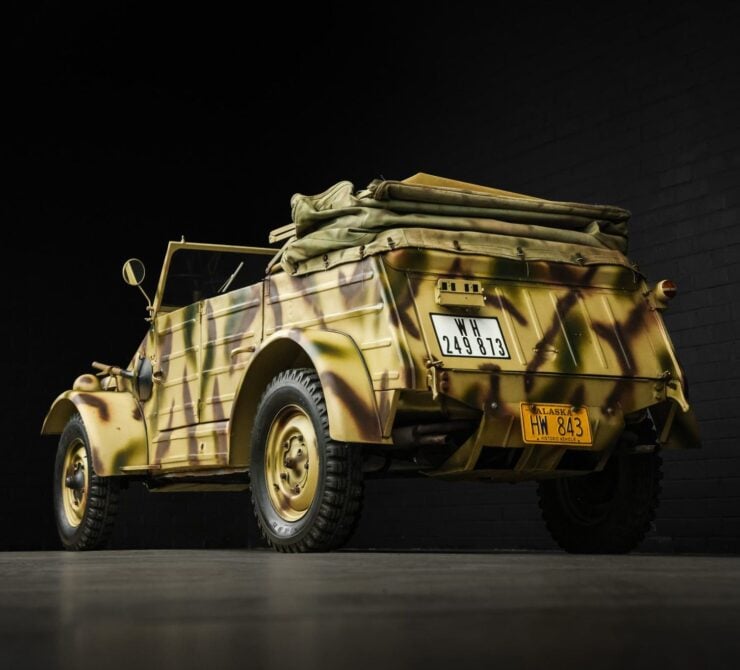
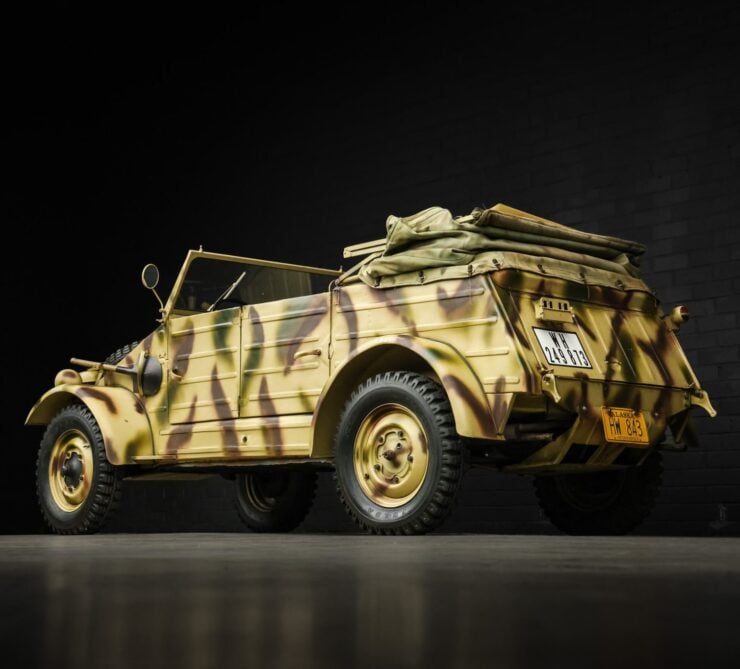
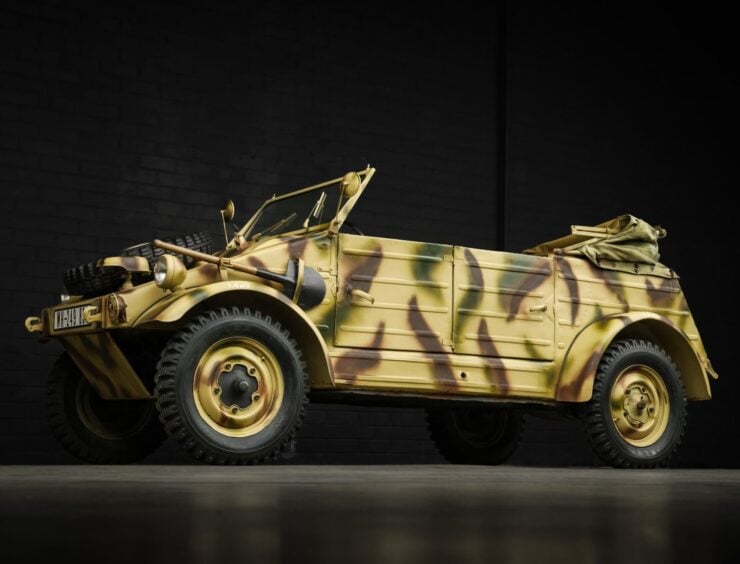
Images courtesy of Bring a Trailer

